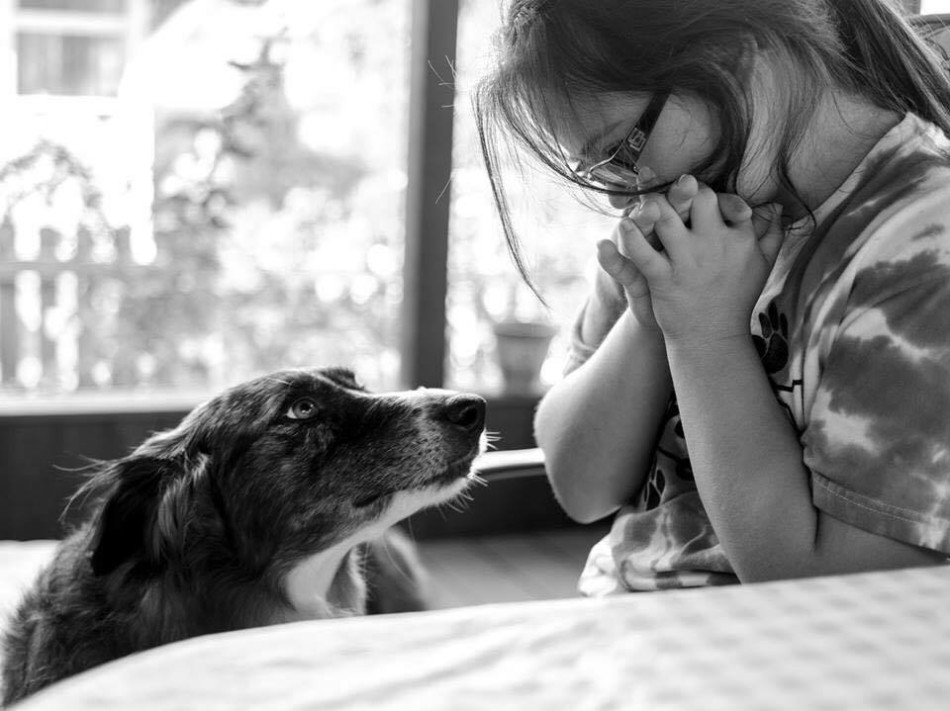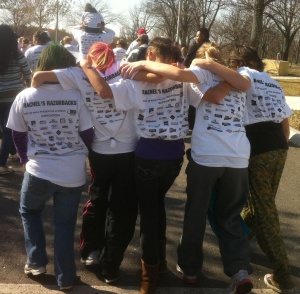A few months ago Rachel and Savanna were invited to present on Social Inclusion. I was invited to share a little from a parent’s perspective. In one of my many past lives where I did presentations on Buddy Walks, fundraising and/or volunteerism, I started doing Jawanda’s Top Ten List. So I decided for my part I would do a Jawanda’s Top Ten Tips for Teachers. I did one for parents, too. I made my short list and then reached out to many of the teachers and paraprofessionals who have worked with Rachel who I believe have done a good job with the social inclusion piece. Guess what? With a little variance, their tips were very similar to each other. Thanks to all of them for input. I believe they all hold this philosophy:
Teachers should look at the life/social skills gained in the academic setting,
not just the academic material.
Here are my first five tips. Watch for the second five later in the week. The most important one is #1.
1. Communication
One sentence: If you do not tell us what happens at school, WE DO NOT KNOW! Teachers need to communicate what is going on in the classroom, on the playground, at lunch, anywhere and everywhere at school to parents. Example: Earlier this year a family had the list of spirit days. It was crazy hair day. Mom helped her 7-year-old get her crazy hair. At drop off, she noticed no one else had crazy hair. She went home and contacted the teacher. “Oh we had to switch that. We told the kids. Did Susie not tell you?” “Uh. No.” Devastating to the child. The point is you need to communicate with parents. Our children do not make it home with these kinds of details. Please read my blog Communication 101 For Educators
2. Be a good role model. If you are accepting and expecting that all students learn, then they will and peers will follow. Show respect to all students at all times. Teachers are the role models. If a teacher treats a student with a disability differently, so will the students. I sent out a request to Rachel’s former teachers/paras asking for ideas on how they as teachers promote social inclusion. Being a good role model was mentioned on every one.
a.Use people first, preferred and respectful language with all students and parents. A child is never a Down’s child, autistic child or cerebral palsy child. Everyone is a child/person first.
b. Do not baby talk students with disabilities.
c. Do not do special things like take a child with Down syndrome down the hall to show how cute she is to another teacher or allow them to go into the kitchen of the cafeteria to talk – unless you do this will other students.
3. Peer Buddies-Not just any buddy will do! Be selective in choosing students to serve as a peer buddy. A teacher needs to find students who provide support, but someone who is not just doing things for the student they are supporting. Know students who are firm, friendly and willing to work with students who may need support, but who won’t do the work for them. A little side note – it would be nice if the student didn’t feel like he/she was doing a favor by being a friend to the child with special needs.
a. This cannot be in the classroom setting only. This needs to cross into other activities like the playground, assemblies, specials such as music and P.E. and library. This is especially critical for lunch time, unstructured times and any time the schedule changes or is different.
b. Cooperative Learning Groups not only provide academic opportunities, but social opportunities for all students. Assign appropriate roles and tasks. Think win-win. How can every student in your class participate appropriately?
c. Have all students participate in all lessons. Don’t allow them to just sit. If they look like they’re doing what is asked, then the students think they are. Again hold everyone accountable and they will see everyone as the same.
d. Peers do not have to be same age. Sometimes older students are a better fit. I have seen this in church, community and school. This year my daughter is in high school. The older girls who already have it figured out are really the ones who are supporting Rachel best. The other 9th graders kind of have that “deer in the headlights look” still.
e. Back to that communication thing: Communicate with parents about appropriate peers for out-of-school activities. I know some teachers will bring up confidentiality issues. I cannot address that for each individual school district so I will just say, FIND A WAY! Children with communication challenges cannot communicate with their parents with any accuracy who is kind, who is a good peer, etc. Encourage students to invite their friend with Down syndrome to attend the football game or school dance with them or their group.
4. Peer presentations. If students are having trouble letting others in or understanding their quirks (and we all have quirks!) allow a parent or counselor to present a lesson on the topic. Sometimes that is all other students need is to understand some of the differences peers may present. For Down syndrome one of the best videos is Just Like You –Down Syndrome. There are others and your local group can help you find those. If you do not have a local group, I can direct you to resources. One of my favorite books is “We’ll Paint the Octopus Red,” and I’ve used it up to 3rd grade. I also like to use my peer presentations to recruit for Down Syndrome Awareness activities like the Buddy Walk. In the early years, Rachel didn’t attend the presentations but as she has grown she is a part and helps by using a PowerPoint to tell about herself and invite friends to be on her team.
5. Social groups, lunch bunch, girls group, boys group facilitated by social worker, counselor, speech therapist or other professional. Rachel was in 3rd grade when we moved to our current district. We knew it was important for Rachel to build a peer group. The school actually recommended a lunch bunch facilitated by the social worker. They picked three girls each week to do lunch bunch with Rachel. It only took a few weeks to get through all the girls in her class. By then, we had time to meet some families, too. Between the observations and our input, they put together a small group (five including Rachel) and they had lunch bunch every week the remainder of the year. She is still friends with many of these girls. We continued it for the remainder of elementary.
a. Middle School. When we went to Middle School they continued lunch bunch but they added a girls group. They had Cougar Time (30 minutes at the end of each day used for clubs, assemblies, team building, homework, etc.) The girls group was at the end of the day one day a week. Ideally, these were facilitated by the social worker and Speech Language Pathologist. We dropped speech when we went to Middle School. We initiated this because we thought Rachel was tired of it and we didn’t want her missing core curriculum classes. Social speech is the big issue so this assisted with that. There were two girls with communication challenges (Rachel and another young lady who didn’t have Down syndrome.) They brought in five to six typical girls. It had variety from working on how to initiate discussions in a group to playing games or making a craft. In 8th grade (last year of MS) it became a true social group and a few boys were added to the mix. They are doing some version of this in high school but it is every other week.
b. Rachel looks forward to these groups. In fact, in Middle School because she was so responsible, they gave her the responsibility of passing on the passed to attend the group. This made her beam with pride.
c. General education teachers can recommend few students they think are great peer buddies. They can have a “mini training” on what is ok for them to do and what the students can do for themselves. We also chose more than one buddy so the student would work well with several peers, not just one.
Watch for five more tips later this week. Please feel to share with teachers, parents, paraprofessionals and the like. Keep in mind that I/we do not have all the answers. Social Inclusion is always a work in progress. We all share frustrations, hurt feelings, challenges and bright shining moments. And I did say all. That means all of us and not just those of us with kids with disabilities.


